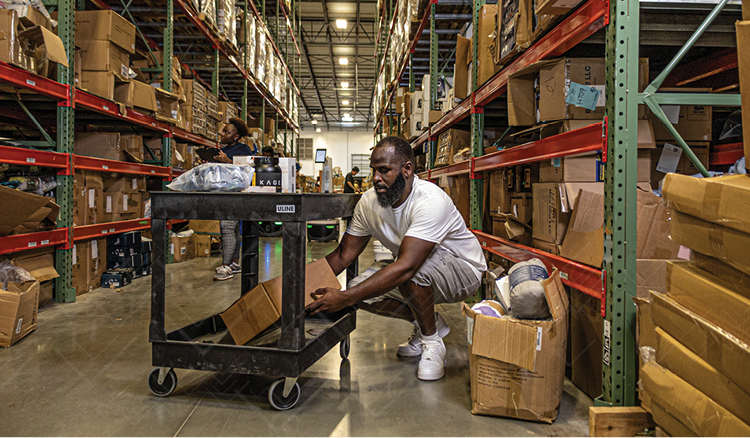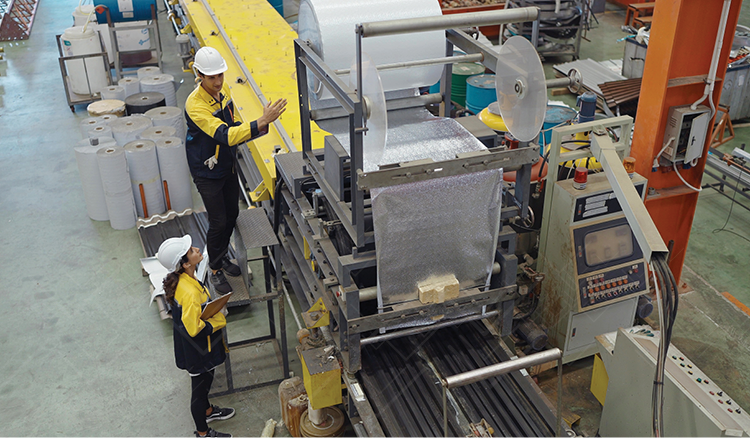How Higher Manufacturing Wages Can Increase Productivity and Profit
You probably think you can’t afford to pay employees any more than you already do. It makes sense on the surface, but digging deeper, you have to ask what you could gain if you paid more and how that might affect your stance.
Higher wages can attract workers who are more productive, which in some cases can offset the extra cost of the wages.
At Veryable, we help businesses gain extra capacity when they need it so they can translate it into more profits. Our on-demand labor platform connects businesses to performance-rated workers so they can increase their throughput whenever it’s needed.
We’ve seen businesses get results from paying more and increasing their capacity with labor all the time. We want to share why and how this approach can work for your business, regardless of whether you use on-demand labor.
Keep reading to discover how paying higher wages can increase productivity and profit for your business.
Higher wages attract more productive workers
Skilled, reliable workers know they can command higher wages. These workers will hold out until a business wins them over by offering the high wage they know they can earn.
On the other hand, workers who aren’t as qualified will accept any wage. These workers are more likely to be happy just getting a job offer from a business.
Outside of disasters or troubles in the economy, the general idea that you get what you pay for when it comes to labor holds true. So if you want to find good workers more consistently, you should expect to pay higher wages.
The workers you attract with higher wages can be more productive than other workers. If they are more skilled at what they do, they can produce more in the same amount of time. This results in higher output per worker.
Paying higher wages is not a guarantee that you will find these highly skilled, more productive workers, but it does increase your odds of finding them because they won’t accept less than what they know they can get.
Higher output from workers can outpace higher wages

If you can get a small increase in output per worker per hour, this adds up quickly into additional revenue. If you get more revenue from completing more orders in the same amount of time because you paid higher wages, the gains from having highly skilled workers could offset or even outweigh the costs of paying them more.
Let’s say you’re able to attract more workers and the higher wages for all your workers incentivizes an increased output that’s high enough to reduce your cost per unit. With a lower cost per unit, you’re making more profit. This is possible because having more output would be stretching your overhead costs out across more units as you reach a higher fulfillment rate. By spending more on the productive capacity of your operation, you unlock growth and profits.
A breakdown of how higher wages can help you produce more profit
Let’s do the math to see what paying higher wages to attract more skilled workers and incentivize current workers might look like in a manufacturing environment. Assuming demand for 10,000 units a day with the potential revenue per unit of $2.00, we can find our total potential revenue.

Then, we can calculate the overhead costs based on assumptions about square footage, rent, management, and other operating costs.

We’re going to assume that the company in our fictional scenario has an average fulfillment rate of 70% at their original pay rate. Then, we’ll see what their revenue would look like if they raised their pay to find better workers and reach a higher fulfillment rate.

As you can see above, the cost of labor increased but so did the output of the facility. Now, we can calculate the revenue gained from selling the extra units produced and compare that to the cost of paying higher wages to all of the workers.

As you can see above, the extra capacity produced enough units that the cost per unit decreased. These improved profits and margins in one swoop, despite paying more workers and paying higher wages to each of them.
Calculated over the span of a year, if this operation runs for five and a half workdays per week (44 hours) then it would gain you $643,909 of incremental profit in the year.
This is a compelling example of how paying a higher wage can have powerful results. If you can find more skilled workers and attract enough of them to increase throughput to a certain level, you can increase your profits.
As much as this example makes sense, you probably still have hesitations about paying higher wages. We’ll dive into those next to help you determine if testing out higher wages is right for you.
Common objections to paying higher wages

Productivity per worker could stay the same
If you paid more for the same productivity per worker, deciding against higher wages seems like a no brainer. However, if paying more wages can attract more workers, then you would still be increasing your output.
In the scenario above, even if the individual output of each of the higher-paid workers was the same as that of the lower-paid workers, the extra workers attracted by the higher wage would allow the business to achieve more output overall. This would still bring the cost per unit down and increase throughput, resulting in higher profits.
Some workers were happy with their pay already
If workers were happy making $12 an hour and then you pay them $15, they certainly won’t complain. This could improve morale and retention.
Besides, the additional pay could attract more workers who might be more highly skilled and could teach these skills to their coworkers, who are now willing to stick around because of their pay raise.
Even if you do end up paying higher wages to people who would have been happy with less, the higher wages will likely attract more new workers. This will help backfill your turnover, and might enable you to grow your capacity to reach new fulfillment levels. As you can see in the example above, this can increase your profits regardless of whether or not the workers become more effective due to the pay raise.
Testing the effects of higher wages
We know you might still be hesitant to raise wages, and we don’t blame you. Wages are an expense, and raising expenses is almost never the goal of a business. There’s a chance you could pay higher wages and still have some of the problems you see today. It’s not a magic solution to all your workplace problems.
However, paying higher wages could net positive results for your company, as we’ve outlined above. We think it’s worth giving it a try, and it doesn’t have to be a huge overnight change.
You can test the effects of offering higher wages without immediately promising raises to your whole workforce. With Veryable, you can find workers on demand to help scale your labor supply. You can offer a different pay rate for each opportunity you post. That means you could use Veryable as a testing ground to see for yourself what a difference the wages you offer can make. While you’re at it, you’ll be building a labor pool that’s available whenever you need it. Learn more about what on-demand labor is and how it unlocks infinitely flexible capacity in manufacturing operations.
Previous Posts
How Policy Constraints, Not Just Production Bottlenecks, Threaten Your Bottom Line
The Future of Manufacturing and Logistics
Create a free business profile today to explore our platform.






